 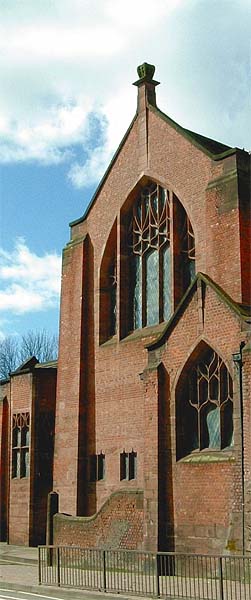 ROCHDALE METROPOLITAN
BOROUGH COUNCIL
 Edgar Wood was an
architect, artist, craftsman, conservationist and town
planner. At the beginning of the Twentieth Century, he
had a national and international reputation and was
regarded as the most important avant-garde architect in
the north of England.
Wood was born into a wealthy Middleton family in 1860. From an early age he had a passion for art and spent hours sketching with his friend, Fred Jackson, who later became an artist. Wood instead trained as an architect, though he viewed architecture as an "art". He filled his buildings with beautiful furniture, stained glass and paintings, often of his own design or making. Jackson and Wood sometimes co-operated on painting murals for his buildings. 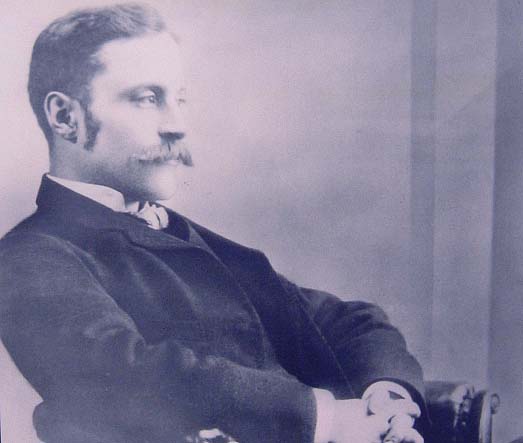 As an artist-architect,
Wood rejected large scale commercial practice and worked
with one assistant, G. A. E. Schwabe. Later, he worked
alongside J. Henry Sellers. Many commissions were from
friends and family in Middleton, Huddersfield and Hale.
Influenced by the artistic and socialist writings of
William Morris, he saw himself as an artisan serving the
people of these localities.
Edgar Wood was an architect, artist, craftsman, conservationist and town planner. At the beginning of the Twentieth Century, he had a national and international reputation and was regarded as the most important avant-garde architect in the north of England. Architecture was changing. The Victorian Gothic style was on the wane and architects were looking for a new way to design. Art Nouveau was a new style based on extended lines and sensuous curves. It was used for buildings, sculpture, painting and the graphic arts. Arts & Crafts, another approach, revived traditional building techniques to create beautiful yet practical buildings. It stressed honest craftsmanship, handmade quality and the importance of art in everyday life. Edgar Wood was influenced by both artistic movements. 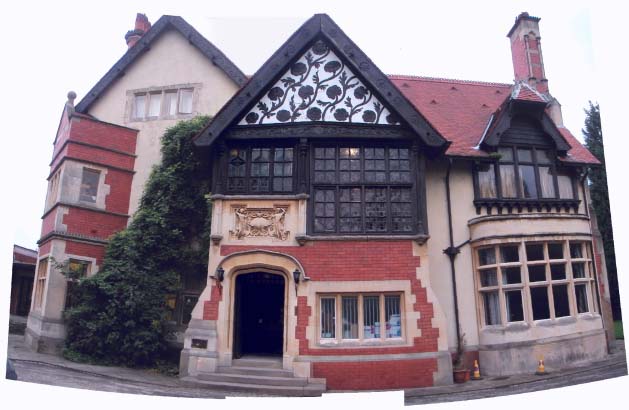 Arts & Crafts
Romance - Halecroft, Hale, Cheshire 1890
Wood's early buildings revived vernacular features, crafts and techniques. They were richly detailed and very romantic. Later, his larger buildings took on strange Art Nouveau forms, confirming his avant-garde reputation. Gradually, a plainer style emerged with decoration carefully placed in specific places. 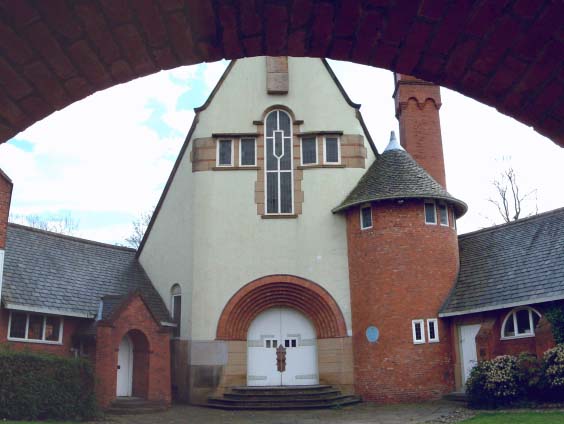 Art Nouveau - First
Church of Christ Scientist, Manchester 1903
At the height of his fame, Wood worked with J. Henry
Sellers and created a series of radical new buildings of a
type unseen before. With their flat reinforced concrete
roofs and sometimes geometric patterns, they were among
the first examples of "modern architecture" in
Europe. 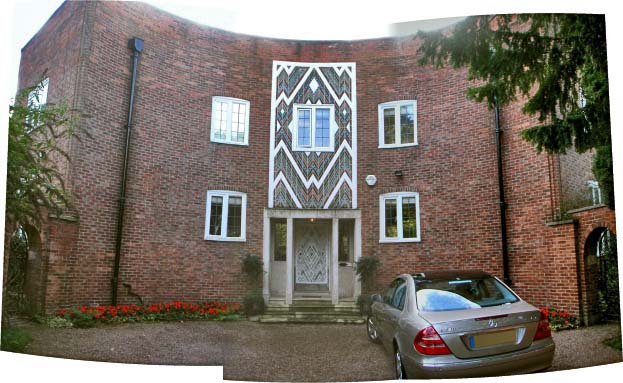 Early Modernism - Royd
House, Hale, Cheshire 1914
Long Street Methodist Church and School [3] (1900) is
characterized by the integration of various buildings
around a formal garden. The church is restrained and
controlled and its header-bond brickwork imparts an
attractive texture to the heavy masonry. Other buildings
contrast in white render and all buildings are roofed in
heavy stone slates. The design integrates a series of
opposites - sacred and secular, expression and restraint,
axial and informal, and rational and romantic. The
buildings feel both ancient and modern, and one can find
the Medieval, Vernacular, Victorian, Art Nouveau, Arts
& Crafts and Modern all harmoniously integrated.Edgar Wood constantly
sought new architectural expression in practical and
well planned buildings. Today, he is regarded as
someone ahead of his time; for example, his
avant-garde designs anticipate Expressionist
architecture of the 1920s and Art Deco of the
1930s. His singular "architectural journey" can
be divided into four stylistic phases.
The Young Adventurer 1887-1893
Arts & Crafts Romantic 1893-1899 Art Nouveau Expressionist 1899-1905 Pioneer Modernist 1905-1914 Middleton,
uniquely, has examples from each phase. As a group,
they demonstrate how Victorian domestic
design evolved into the Twentieth Century
Modern Movement.
Wood took an active
interest in conservation. He helped
preserve St. Leonard's Church, Middleton and led
a campaign to save the large Colonnade of
Manchester Old Town Hall, rebuilding it in
Heaton Park. He also practised town planning and
at the Fairfield Moravian Settlement,
Droylsden, he and Sellers planned Broadway, in the
new Garden Suburb style.
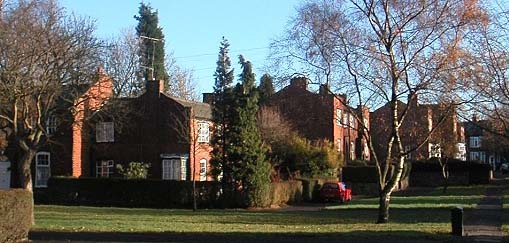 Town Planning -
Broadway, Droylsden 1913-1920
In 1922 Wood retired to Italy to paint, where died in 1935. With neither students nor family to preserve his reputation, he was quietly forgotten and the modern architecture he had anticipated was taken up by a new generation. In the 1950s, Edgar Wood was rediscovered by Dr. John H. G. Archer, who has spent a lifetime fostering Wood's architecture and reputation. Nikolaus Pevsner, the famous art historian and author of the Buildings of England series, subsequently praised Wood as the most progressive of all Edwardian architects whose designs were at the cutting edge of European contemporary architecture.  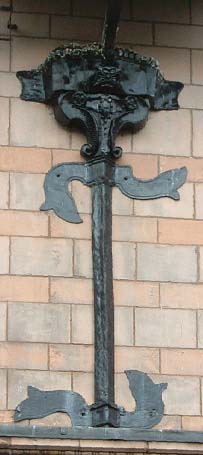 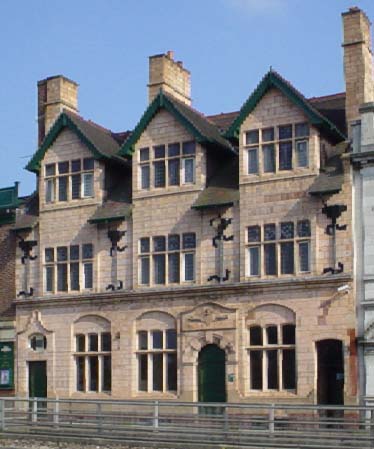 2 Manchester
and Salford Bank (1892)
The former
Manchester and Salford Bank [2] (1892) is the
iconic building of this early phase with its
ornate pink faience walls, bold dormers,
projecting eaves and the unusual combination of
symmetry and asymmetry.
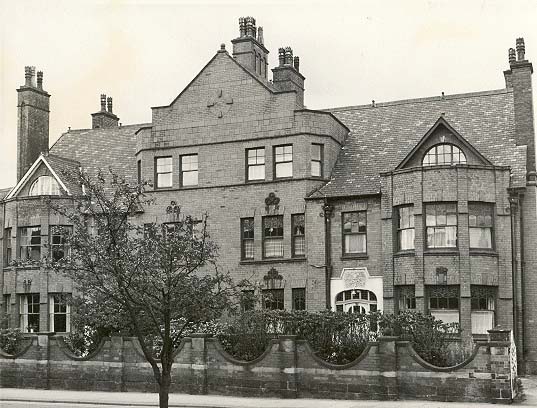 7
37 & 39 Rochdale Road (approx. 1891)
37 & 39
Rochdale Road [7] (approx. 1891) is a large
semi-detached pair of houses built in bright red
brick and terracotta. It is a distinctive roadside
building that closes the view along Spring
Gardens. Sadly, its tall chimneys have been
lowered reducing the architectural effect.
 After he moved his
office to Manchester in 1892, there was a change
in artistic direction. Wood adopted a more
conscious Arts & Crafts idiom. His buildings
were finished in white or unpainted render,
combined with stone or common brick, and with
roofs of heavy stone flags or tiles. He
successfully reinterpreted vernacular traditions
to create modern buildings rich in form, colour
and texture, each a work of art in which to live.
Today, it is difficult to imagine how radical such buildings first appeared, since the style became universal in the twentieth century. They were bright, fresh and stimulating. His drawings often showed them in a state of romantic decay - in deliberate opposition to the hard-edged technology of the times. Two of these romantic "white" buildings can be found in Middleton town centre, a pair of semidetached houses, Fencegate & Redcroft [6] (1895) and a shop and seven houses, 34 to 48 Rochdale Road (1898) [10] opposite. 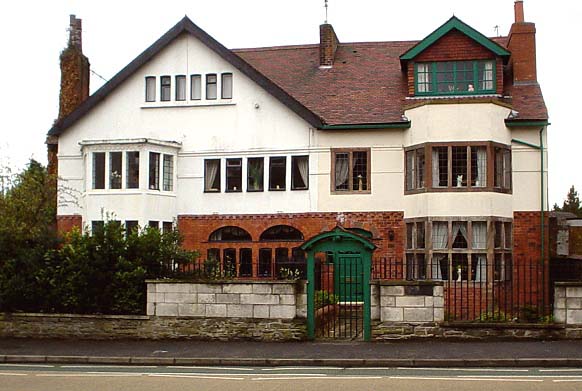 6 Fencegate &
Redcroft (1895)
Wood skilfully
unified Fencegate & Redcroft [6] into a single
asymmetrical design. There is visual interest,
good detailing and a wide range of traditional
materials beautifully combined.
Redcroft was Edgar Wood's own home and, from Cleworth Road, one can see the roof lights to his attic studio where he worked on his buildings, created paintings and designed furniture. He was so busy that he installed a speaking tube to communicate with downstairs. 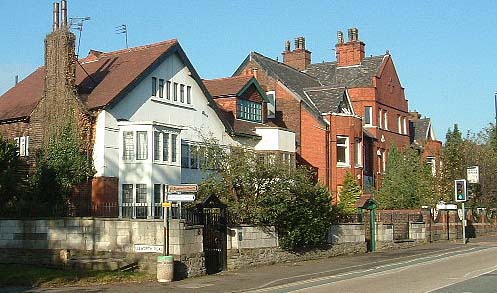 6 Fencegate & Redcroft and 7 37 & 39 Rochdale Road Look at
Fencegate & Redcroft, and compare them
with 37 & 39 Rochdale Road adjacent.
The change in style is striking, even with
only three years between them. Fencegate &
Redcroft are asymmetrical and have a much
lighter feel, pointing towards the Twentieth
Century. In contrast 37 & 39 Rochdale Road
are heavy and Victorian. Yet, there are common
features too. Each design relies on a large
gable and both have the motif of a bay window
breaking the eaves topped by a dormer. When
seen together from the south, they form an
expressive twosome, the larger red building
acting as a backdrop to the later white one.
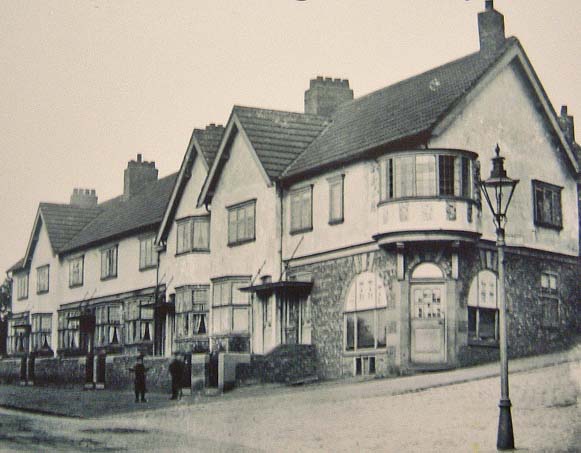 10 34 to 48 Rochdale Road (1898) 34 to 48
Rochdale Road [10] form an
asymmetrical terrace which, uniquely, has
a pair of overlapping gables as its main
feature with a corner oriel window over
the shop entrance. Doors have flat
canopies held by iron stays while
fanlights above light the interiors. Here,
Wood's interpretation of the vernacular is
becoming increasingly free and inventive.
The early photograph shows the original
beauty of the terrace now largely hidden
by modern alterations. It was at once
comfortable and homely, yet sophisticated and artistic. 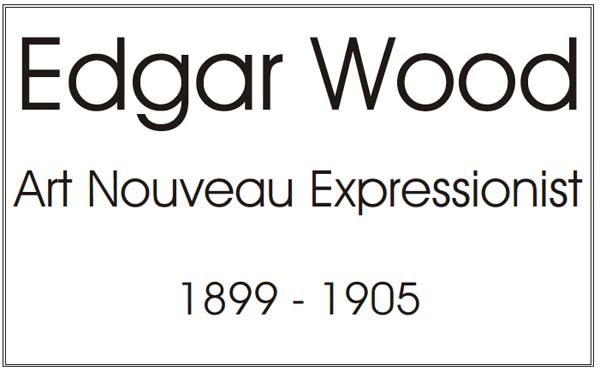 After 1899,
Wood used white render only for contrast in
larger designs and, in his Lancashire and
Cheshire buildings, he used common brick to
create a plain but subtle appearance. His
architecture began to rely more on overall
form for its effect and decoration was
restricted to specific locations, such as
doors. Major buildings became increasingly
expressive and he returned to using Art
Nouveau motifs, this time sophisticated and
fully formed.
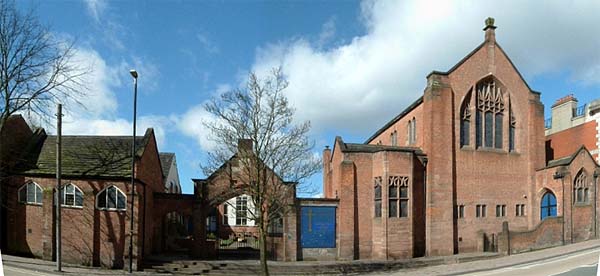 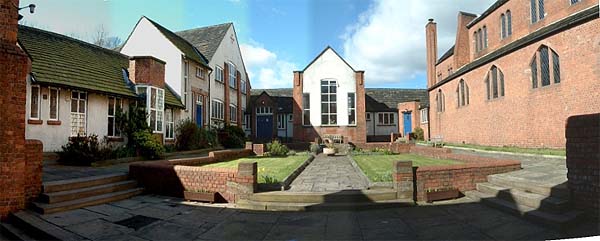 3 Long Street Methodist Church and School (1900) Wood built
four Art Nouveau masterpieces all of which
are now "Outstanding" Listed Buildings.
These include Long Street Methodist Church
and School, Middleton, a large house
called Banney Royd and a Public Clock
Tower, both at Lindley, Huddersfield. The
phase culminated in the First Church of
Christ Scientist built near Manchester in
1903, one of the most distinctive Art
Nouveau buildings in England. He also
designed working class terraces and
smaller buildings with a more traditional
feel.
3 The Church Interior
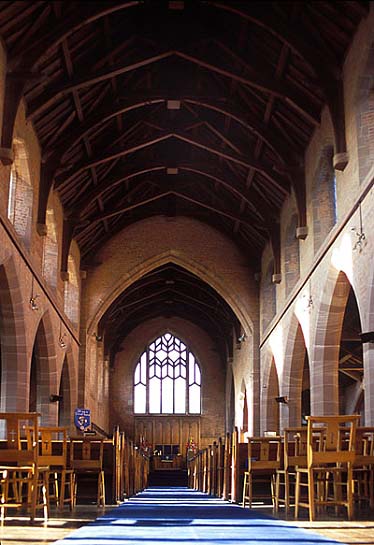 The image above is Copyright Andy Marshall 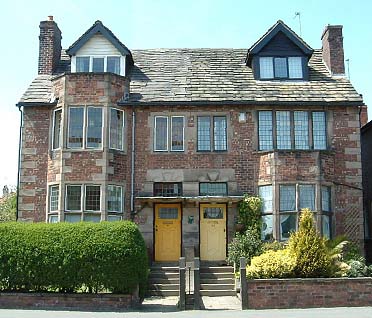 9 51 & 53 Rochdale Road (1900) Further north, on
Rochdale Road, lies a pair of semi-detached houses, 51
& 53 Rochdale Road [9] (1900). These form a bulky
building with a big roof and strong dormers slightly
raised up to impress. A counterpoint is the delicate
texture of the brickwork and leaded windows. The doors
have geometrically shaped panels and carved lintels. The
design holds the street corner nicely and avoids
absolute symmetry by having a two storey bay window to
the left and a single bay to the right.
 Edgar Wood entered a
creative dialogue with J. Henry Sellers whom he met
around 1901. The result was a new phase and the some
of the earliest Modern architecture in Europe.
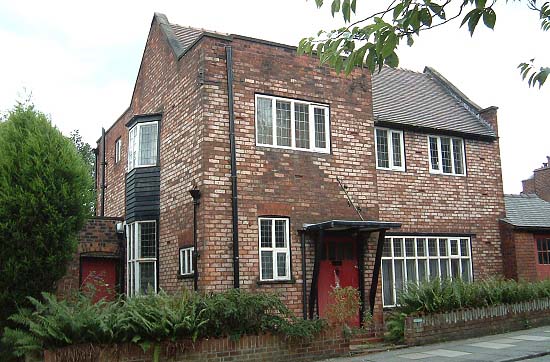 8 Arkholme (1901), 1 Towncroft Avenue The very first example was a photographic studio, Arkholme, for Charles, brother of Fred Jackson [8]. This is angular, plain and something of a transistional design. The austere character was new, as were the two flat reinforced concrete roofs. Nevertheless, being 1901,the building still has the expressive character of the previous phase. 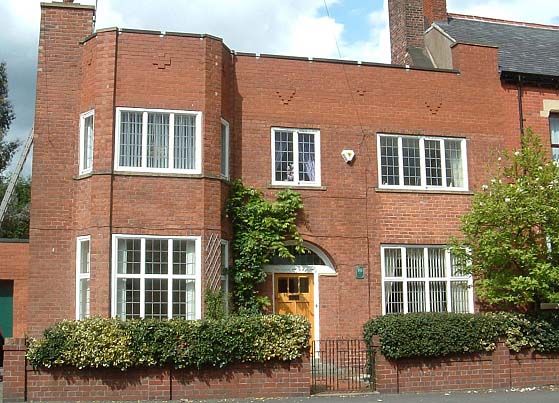 5 36 Mellalieu Street (1906) 36 Mellalieu Street [5] (1906),
dispensed with the pitched roof altogether and was the
first of a series of completely flat roofed buildings
which established Wood as a pioneer of Modern
architecture.
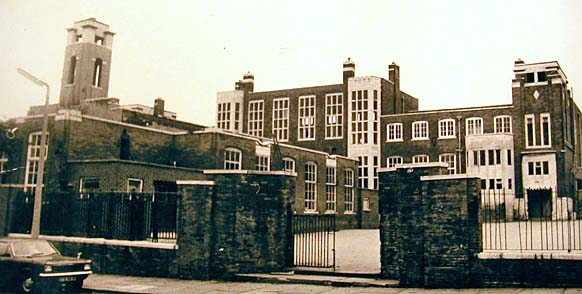 4 Durnford Street School (1908) On Rectory Street lay
England's most unusual school. Durnford Street School
[4] was
jointly designed by Wood and Sellers. It was
revolutionary in construction, planning and appearance
and set new standards of design for children. Sadly,
the Junior School was demolished in 2002. The
surviving Infant School illustrates the utilility of
flat roof construction for modern deep buildings.
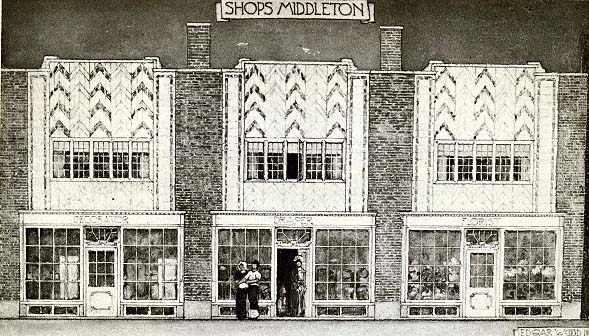 1 33-37 Manchester Road (1908) The shops, 33 to 37
Manchester Road [1]
(1908) are similarly unparalleled and show Wood's
interest in decorative tiles and "jazzy" geometrical
patterns in architecture. These buildings anticipate
Art Deco of the 1930s.
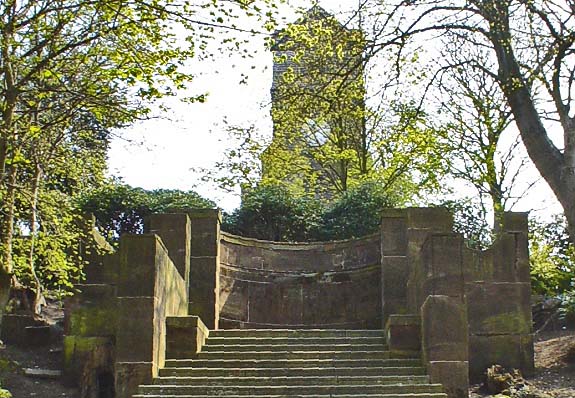 11 & 12 Staircase, Exedra and Church (1906) St. Leonard's
Church [12] is one of the finest medieval churches
of Lancashire. In 1902, Wood replaced its roof
with a sensitive Perpendicular design. He also
added a small flat-roofed boiler house and
chimney. Finally, in Jubilee Park he designed a
formal Staircase, Exedra and Fountain (now lost)
[11] to frame the view of the church tower.
Middleton has a
wealth of architecture designed by Edgar Wood.
This guide describes the buildings close to the
town centre. Uniquely, they show how historical
styles evolved into the modern architecture of the
Twentieth Century. To use it as a trail, start in
Middleton Gardens, opposite the shopping centre,
and work your way northwards along Long Street and
Rochdale Road. The best place to finish is at
Saint Leonard's Church, on the hill overlooking
the town.
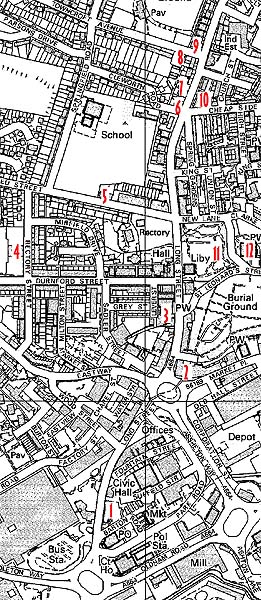 It has been produced
in association with Middleton Heritage &
Conservation Group, Friends of Long Street Church,
Friends of Edgar Wood, Middleton Civic Association and
Middleton Library Local Studies. Text by David Morris
MCD MRTPI IHBC.
 |